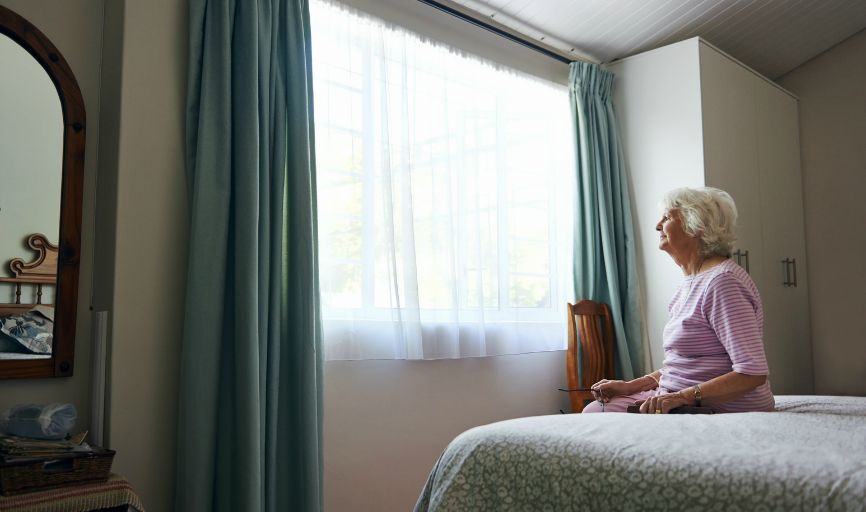This article updates one from the same author from May 2019.
The premier of Ontario, Doug Ford, would have us believe that the deaths of 249 people (April 20) in residential care homes are just an unfortunate aspect of the COVID-19 crisis. In reality, it’s a case of a chronicle of deaths foretold.
Step back to the Ontario election campaign of 2018 – Ford’s promise to introduce a buck a beer might have got the most publicity, but it was the signature promise to end hallway medicine within a year that generated a substantial number of votes for him. His plan would supposedly “end hallway medicine by creating 15,000 new long-term care beds over the next 5 years.” So, what’s the connection between hallway medicine and deaths in long term care homes?
As an official report from 2018 stated: “There are many patients in Ontario who are waiting in the wrong place in the system, and who require an alternate level of care (ALC). For example, in October 2018, almost 16% of days in hospital were spent by patients that were waiting for care in another setting.”
Another area where we can see the direct impact of capacity pressures is in how difficult it can be to find space in long-term care homes.
“The largest proportion of cumulative ALC days (province-wide), are currently attributed to patients waiting to be discharged to long-term care (59%). This means that people are waiting too long in hospitals before moving to an open bed in a long-term care home. This is in part due to the fact that long-term care homes are currently at 98% capacity. A 2017 Canadian Institute for Health Information report found that in Canada more than 20% of seniors admitted to residential care could remain at home with appropriate supports; furthermore, seniors assessed in hospital are substantially more likely to be admitted to residential care than those assessed in the community. The mis-match of capacity, demand, and use of services is one of the main pressure points facing the health care system, contributing to hallway health care.”
In other words, the problem of overcrowded hospitals is being solved by shuffling out- patients from the wards and hallways into the understaffed, almost at full capacity, residential homes.
Ford’s Bill 74, passed in April 2019, had the fuller, more Orwellian, name of The People’s Healthcare Act. As the website Rank and File points out, the Bill “proposes a mass merger of health agencies into one giant bureaucracy, giving the Health Minister major new powers to ‘integrate’ healthcare – including to ‘partner with another person or entity’ (privatization) and ‘to cease to operate or to dissolve or wind up the operations’ (cuts).”
Ford also set up a fancy sounding group called the Premier’s Council on Improving Healthcare and Ending Hallway Medicine. It released its first report in January, Hallway Health Care: a System Under Strain and it began by stating that “the system is facing capacity pressures” without any reference to decades of cuts that have left Ontario with the lowest number of hospital beds per capita of any province – and one of the lowest of any industrialized country. Instead it blames demographics, specifically the growth in the numbers of the elderly and growth in the population in general.
Getting space for new long-term care beds is fundamental to ending hallway medicine. There is an immediate need for about 5,000 such beds. And as the number of Ontarians over 75 is growing at 4 to 5% annually, the need is for 15,000 new care home spaces over the next four years and a continued expansion of live-in home care services to eliminate the problem.
The Premier’s Council is headed by Reuben Devlin, who was president of the Ontario Conservative Party during the Harris health care cuts. It’s worth noting that three of the eleven members of the Premier’s Council are associated now, or in the past, with the private companies that deliver for-profit seniors’ care in Ontario. Two are current CEOs of care companies and a third council member is a former home care company board chair. It was no surprise that the website of Home Care Ontario, an organization representing home care providers across the province, had an article stating that they welcomed the report of the Premier’s Council. Bill 74 envisages merging all 14 of the province’s Local Health Integration Networks into a single agency. We wrote in 2019 [link] that “it is highly likely that the private companies that provide more than 95% of Ontario home-care are going to be supervised more loosely, most probably by this one government agency.”
This has been borne out by a recent CBC investigation. The Ontario Ministry of Long-Term Care ensures people that each care home has an annual inspection that includes interviews with residents, family members and staff “as well as direct observations of how care is being delivered.” However, the CBC found that last year, only nine out of 626 homes in Ontario actually received so-called resident quality inspections. A review of inspection reports of all the province’s long-term care homes for the last five years found that most received a comprehensive resident quality inspection in 2015, 2016 and 2017. Then the number dropped to just over half in 2018 and just nine last year.
Natalie Mehra, executive director of the Ontario Health Coalition (a union based group), which has been lobbying for better regulations around long-term care in Ontario for 25 years reacted to this news. “It’s incredibly frustrating to hear this,” she said. “We have been fighting for a regular, unannounced inspection each year for all of the homes since the 1990s, and we’ve won it, and then we’ve seen it deregulated, then we won it again. And then quietly behind the scenes, it stops happening again, and we have to fight and win it again.”
PSWs (personal support workers) are leaving the industry due to demanding working conditions, poor compensation, high rates of injury and abuse, and lack of full-time work. Precarity in work is a serious concern as full-time work is scarce, with workers having to negotiate multiple jobs, and balancing the scheduling needs of multiple employers.
As the former deputy Minister of Health pointed out in 2019:
“For each home-care visit made by a PSW, the company gets $34. The worker gets $17 to $19. Even with employment benefits worth about 18% of pay, these companies are achieving at least a 20% profit margin with no risk of bad debts since their client is the taxpayer of Ontario. These companies increase their profit margin even further if they can shift more vulnerable Ontarians from a publicly-funded to a private model of care. The companies have grown from small organizations to diversified profit generators. They even provide international consulting services that are focused on maximizing profits as the richest generation in the world’s history ages and requires help at home. The home-care industry may be about to enter a golden era of profitability in Ontario.”
Instead, due to cost-cutting and profit gouging, the seniors’ homes became death traps.
Socialist Alternative fights for the following demands:
- Fight the cuts – restore full funding to hospitals and long-term care homes
- Fight Privatization – no 2-tier health service
- End private, for-profit care homes; bring all into public ownership and control
- Immediately raise the wages of all care home workers to union rates of pay
- Support the struggle for decent, unionised, well paying jobs in hospitals and care homes
- For a socialist society, one that can finally offer dignified care and treatment for the elderly




